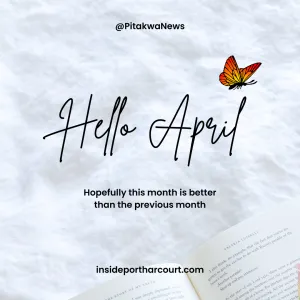
Congratulations! You’re about to set up a fish pond for your home. There’s no better feeling than knowing that you have a healthy ecosystem in place, and you can see the results of your hard work every day. But there are some things you need to do before getting started. So let’s get down to those 10 essential steps, starting with…
1. Choose your fish pond location
The first thing you’ll want to do is choose the location for your fish pond. Make sure that it gets a lot of sunlight, as this will help keep the water in good condition. Also make sure that it isn’t near any drains or septic tanks. If possible, try to find an area that doesn’t have any roads or driveways nearby (you wouldn’t want someone accidentally driving over your garden). Finally, avoid placing your fish pond near pools and hot tubs as these can create problems with algae growth and bacterial infections if they’re not cleaned regularly enough by visitors from outside families who may have children who like swimming in them without knowing how dangerous they can be when left untreated long enough.”
2. Install a pump
Install a pump
A good fish pond needs a pump to keep the water flowing throughout the system. You’ll need to make sure you have enough power to run it, as well as ensure that it works properly and doesn’t leak or break down over time. A fish pond filter will also be needed in order for all of your fish to survive!
3. Install the liner
The liner is the foundation of your fish pond, and it’s important to make sure you get one that is strong enough to hold water. You’ll also want it to be smooth, flat and clean. Finally, make sure that the pond is level before installing the liner so that there will be no issues with drainage or refilling after installation.
4. Add water and test it
Now that you’ve bought a fish pond and made sure it’s the right size, it’s time to add water.
Test the pH, ammonia and nitrite levels of your water to make sure they’re within acceptable limits. If you don’t have test kits for these things (and who does?), use available resources online or ask someone at your local pet store how to test them. Add plants—fish love lush greenery! And lastly: enjoy your new ecosystem!
5. Choose your fish and plants
When choosing fish and plants, it is important to make sure they are compatible with each other. This makes it easier for the two species to co-exist in your pond. The best way to do this is by choosing fish species that are adapted to your climate, or at least similar enough so that they can share resources like food and water. You should also look for plants that provide food for the fish as well as shelter from predators such as birds or other animals who might want an easy meal on their plate!
For example: if you live in an area where water freezes over winter (like Canada), then not only do I recommend goldfish instead of tropical ones like those from Thailand but also consider planting some aquatic plants around them so they’ll have something green growing around them all year round!
6. Complete the pond by adding gravel, rocks and a waterfall
Now that you’ve got a nice, flat surface to work with and some gravel to add, it’s time to build your pond.
Cover the bottom of your pond with rocks and gravel. This will help keep debris out of your fish’s water, which is important because they like being clean!
Create a waterfall by placing two pieces of wood on either end of an upside-down bucket (the bucket should be large enough so that its base fits into one side hole in an aquarium stand). Place them about half way down so that when it rains or drips into their tank, water falls onto these pieces instead of directly onto them themselves—this will create an added level of oxygenation for them too!
7. Position the ponds and plants
To set up your fish pond, you’ll need to position the plants near the surface of the water. This ensures that they get enough sunlight and will grow well. If you don’t want your plants growing too fast, then make sure they are placed in an area where they won’t interfere with your fish or other animals in their habitat.
8. Add a skimmer to the pond to clean it automatically
A skimmer is a device that uses a net to collect debris from your pond. The net is attached to the edge of your fish tank and catches the trash, which can then be sucked out through a small hole in the bottom or side of the tank.
The best way to install this type of filter is by using a special adaptor plate with holes for various sizes of skimmers, so that you don’t need to buy multiple filters. This makes it easier on your wallet because there’s no need for multiple filters (and extra parts) when just one will do its job perfectly!
9. Clean your pond, but don’t do it too often
If you have a fish pond, the first thing that you need to do is clean it. But not too often. You will be doing this once per month or so, but don’t go over that limit of once every two months as it can damage your ecosystem and even kill some of the fish in your pond. If it is cold outside, then try not to clean up until springtime when things start warming up again (remember: don’t do this when there is ice on top)
10. Test the water regularly and add more plants for extra oxygen safe haven for insects
To ensure the health of your fish, you should check the water regularly and add more plants for extra oxygen. If algae starts to grow, remove it with a net or brush. You can also use bleach to kill algae but avoid using any chemicals that may harm other fish species in your pond.
If there isn’t enough oxygen in the water, then you’ll need to add air stones (or bubbles) so that they will be able to breathe easily. You should also make sure that there is enough food available for all of your fish—if one dies from lack of food or gets sick due to bad water quality then it could spread through out all parts of your pond!
Conclusion
Now, you have all the information you need to start a fish pond. But remember that it’s not an easy task and there are many things you need to consider before starting this project. It may seem like a lot of work, but with time and patience, your pond will be so beautiful that everyone will want one! Good luck!




